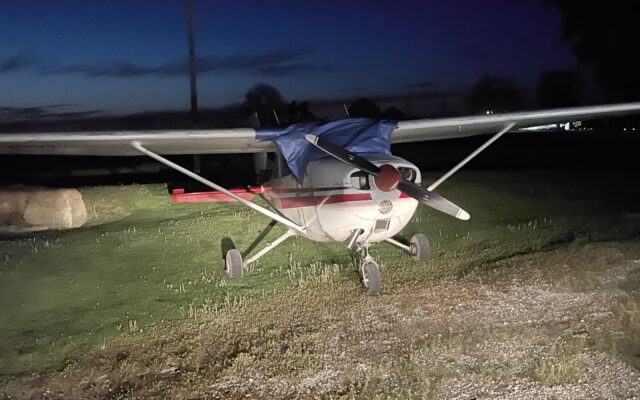REFLECTING ON THE SHOW-ME SHOWDOWN’S MOVE TO SPRINGFIELD AND VAN-FAR’S CHAMPIONSHIP

We did not know what to expect of a trip to Springfield for the Show-Me Showdown at JQH Arena on the Missouri State campus. The Hammons Student Center (now connected to JQH Arena) held the Class 1A and Class 2A championships in 1991, but all Show-Me Showdown games from 1992-2017 were played in Columbia at the Hearnes Center and Mizzou Arena. The change impacts everyone in some form, but three hours and 15 minutes of one-way travel as opposed to 40 minutes of travel resulted in an overnight trip for KRES Radio and the players and fans of the Cairo girls, Glasgow girls, and Van-Far boys. The notes about travel and a hotel are not meant to imply a negative experience or suggest frustration with the location change. However, it is important to recognize we anticipated the reduced staff capabilities and various positive and negative changes to the overall adventure.
Springfield is beautiful, and it is now home to two insane KRES-area state championship victories in two years. Regardless of recency bias, how could someone claim Van-Far basketball’s overtime title and Centralia softball’s walk-off title are not two of the most dramatic KRES-area state championships ever? When you consider the drama of Van-Far’s quarterfinal and Centralia’s semifinal, you may be talking about two of the best statewide runs across all sports in the last decade-plus. JQH Arena is impressive, and I imagine the Show-Me Showdown would not have returned to Springfield with a five-year contract if it were not for the arena’s construction in 2008. Due to the aforementioned Hammons Student Center, there are two Division I floors with Division I seating under one roof. My broadcast partner Scott and I were able to walk from the JQH Arena floor to the Hammons Student Center floor in about one minute. You walk up one ramp, turn left, and walk up another ramp. Neither ramp has a steep incline. In Columbia, Mizzou Arena and the Hearnes Center are separated by a couple blocks, so MSHSAA needed a similarly convenient setup if it hoped to switch. In fact, MSHSAA and everyone in attendance could not have asked for more from a setup standpoint given Missouri State’s courts and seating are a rarity even in the power conferences. JQH Arena’s confines also provided a more intimate feel for a high school game than Mizzou Arena. All Class 1 and Class 2 semifinals as well as the championship games were played in JQH, which holds about 11,000. Mizzou Arena holds about 15,000, and the seats at JQH Arena are closer to the floor. Although the convenience and quality of the Hammons Student Center remain excellent for a secondary court at the Show-Me Showdown, the Hearnes Center in Columbia appears to hold noise better. The Hammons Student Center also presents a few challenges for workers, media, and first-row fans because the space between the court and stands is tight at best. The KRES-area traveled well for all contests.
Van-Far’s state championship marked the KRES-area’s first basketball title since Meadville’s undefeated 2015 season. We have addressed the subject in various broadcasts, preview stories, and recaps, but Van-Far’s resilience on the biggest stage was borderline unfathomable. To erase a 13-point fourth quarter deficit in a state quarterfinal and erase a nine-point fourth quarter deficit in the state championship requires experience, guts, and fortune. The Indians also trailed 50-42 with 1:49 to play in regulation in the state championship before Trey Miller hit a game-winning layup with four seconds left in overtime. The lack of a shot clock makes the aforementioned deficits significant in the regular season. In the state bracket, those deficits are magnified perhaps 10 times. Quarterfinal and championship opponents are strong by nature. Therefore, they have held several nine and 13-point leads throughout the course of the season and learned how to stall in order to protect the lead. The stakes in the postseason also maximize a team’s incentive to hold the basketball down the stretch. The Indians benefited from two four-year starters and one three-year starter, but style of play proved to be of equal importance. Van-Far possessed the rare Class 2 ability to score inside through a big man or dribble penetration, catch fire from outside, and utilize its athleticism to force turnovers and score in transition. For example, senior Lathyn McMorris boasts state championship track speed with the moxie to drill a 30-foot 3-pointer with Van-Far down nine with two minutes to play in the title game. McMorris and his fellow veterans have fueled a remarkable turnaround. Van-Far went 7-17 when the current seniors were freshmen. The 2014-15 season marked the fifth straight year the Indians finished at least eight games below .500. 12-13, 15-10, and 29-3 seasons have followed in the three years since. In fact, Pat Connaway was 0-8 in the postseason before the 2018 championship run. Teams who when state championships do not face such droughts. Consider fellow KRES-area Class 2 teams in Harrisburg and Salisbury. The Bulldogs and Panthers are often district title contenders, and they are competitive at a minimum. Small school sports are cyclical, but the best programs tend to inspire young kids and develop talent at the lower levels. Connaway deserves immense credit for the Van-Far rebuild. The 1992 Moberly graduate acknowledged on KWIXLand This Morning many doubted his abilities before Van-Far showed improvements in 2016. The next day, Connaway and his players celebrated with a championship parade. I mentioned the program’s past struggles in the playoff broadcasts because I found it relevant to Van-Far’s current success. When Scott and I returned to the famed Red Rover for the drive back to Moberly, I said, “That’s what I love about high school sports. They just built lifetime memories.”
Eric Duick



